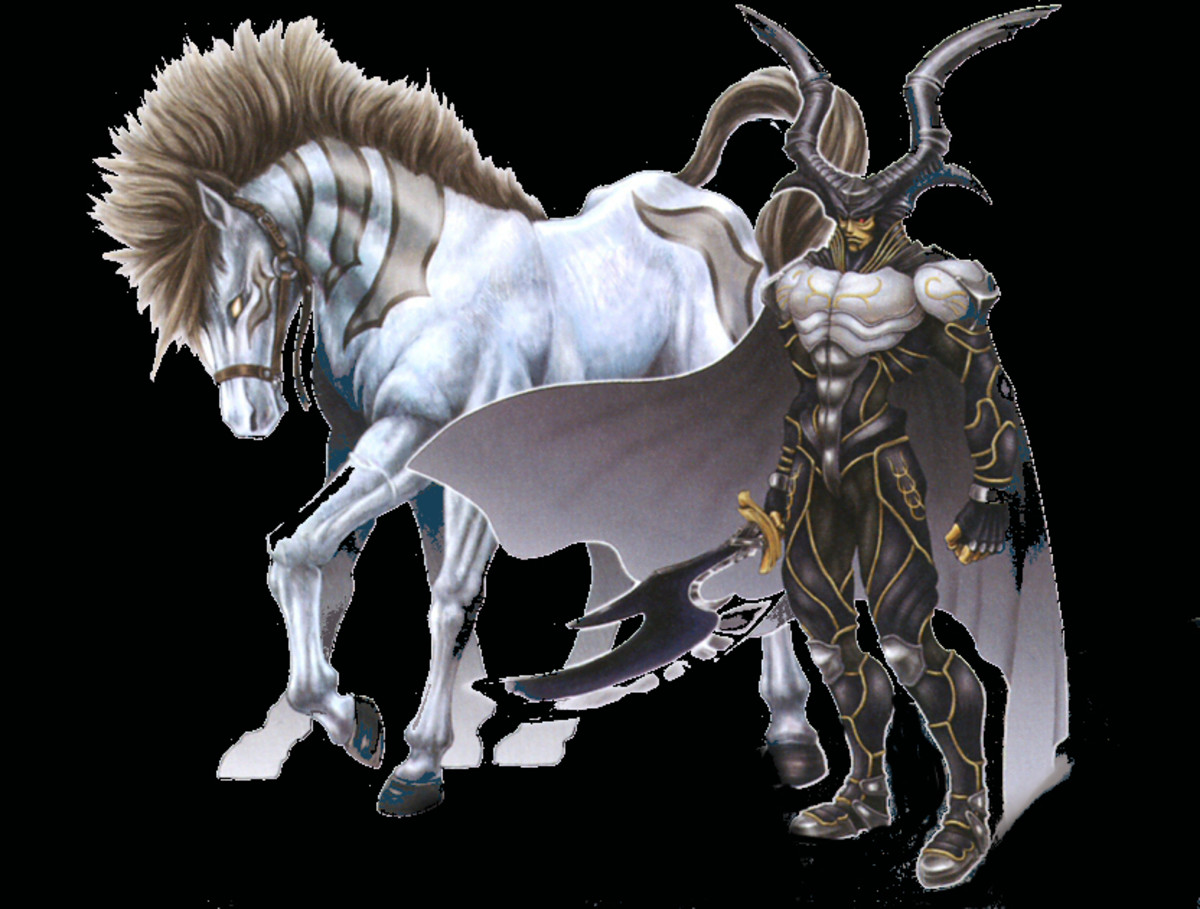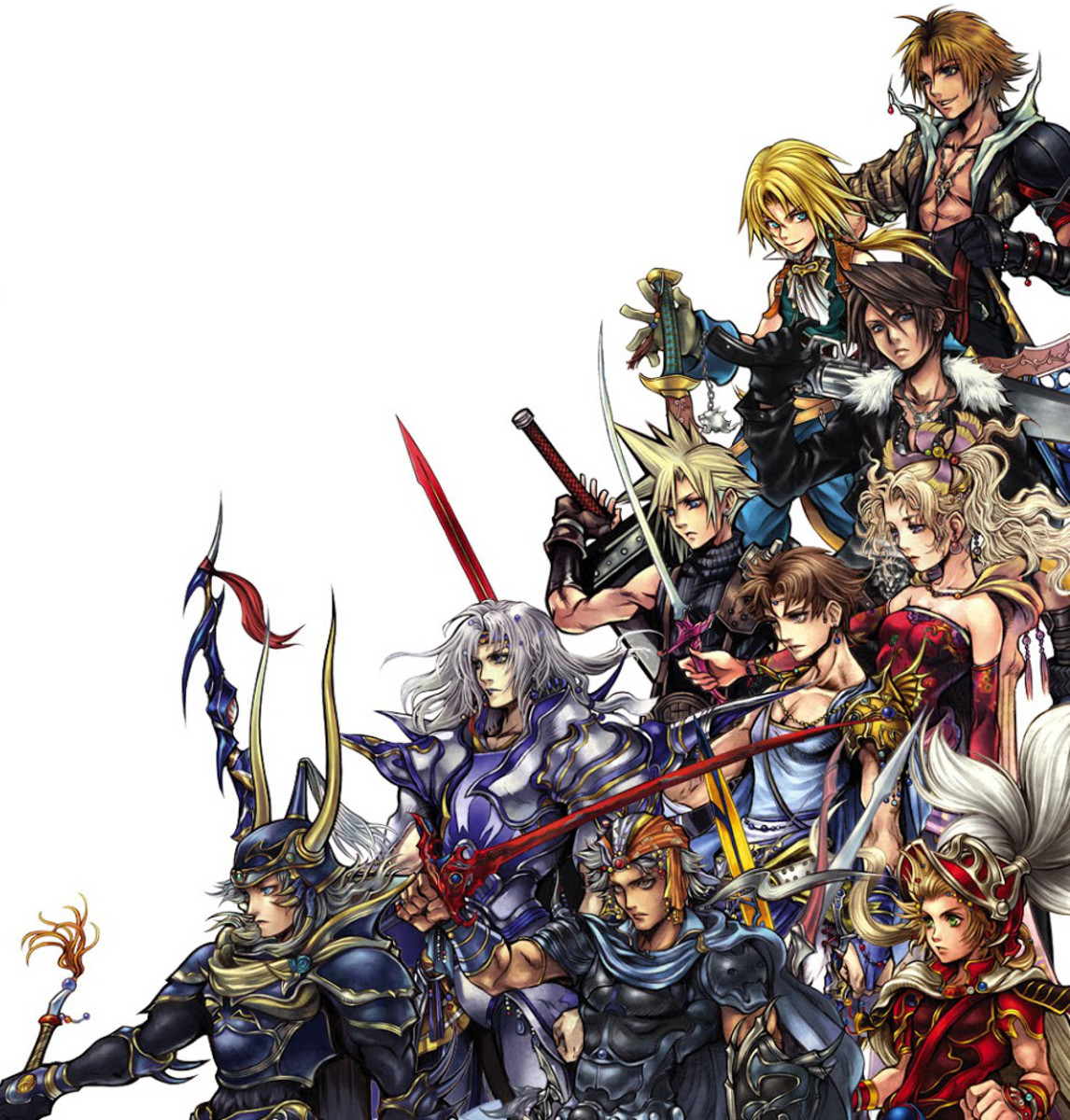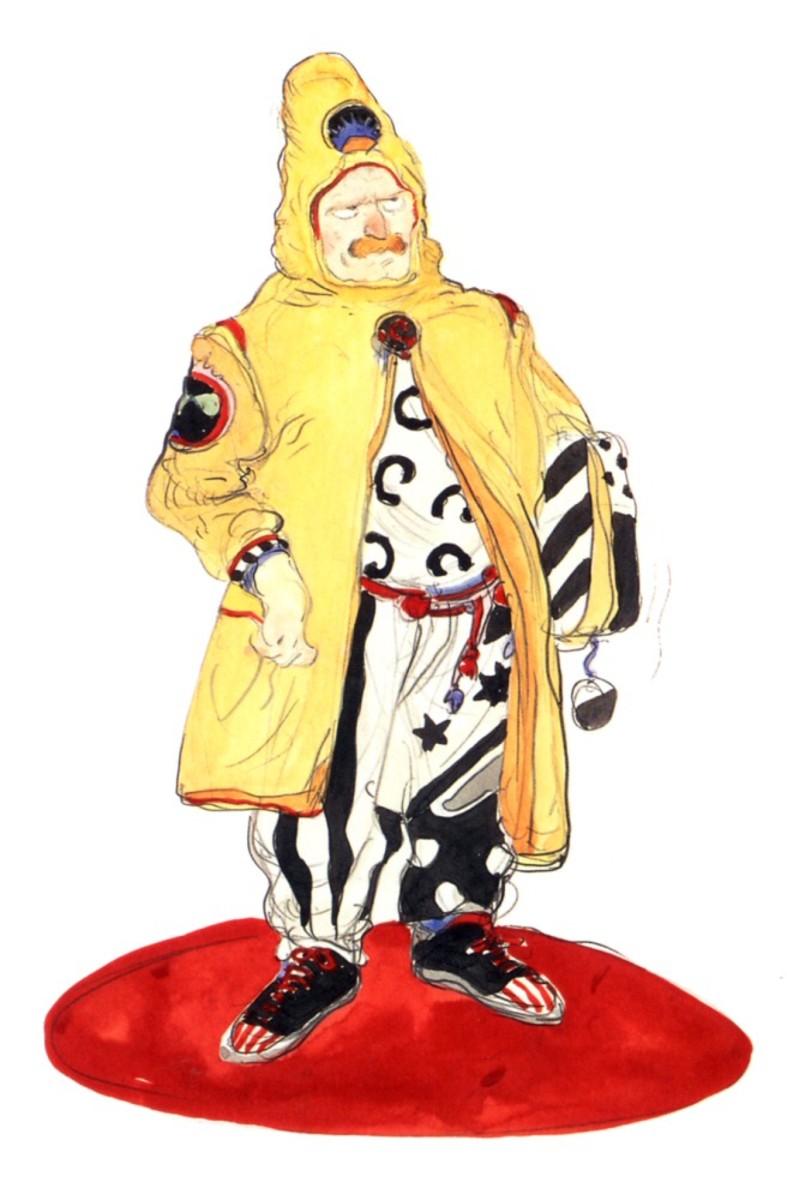- HubPages»
- Games, Toys, and Hobbies»
- Computer & Video Games»
- Roleplaying Video Games»
- Japanese Roleplaying Video Games
A Brief History of Final Fantasy
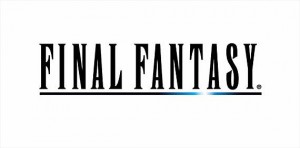
Before technology allowed sprawling real-time RPGs to take over our free time, we had to settle for the turn based, menu-driven Japanese role-playing game. The most famous of these is Square Enix’s Final Fantasy series. Story-driven and incredibly linear but nonetheless deep and detailed, FF brought the RPG into the mainstream and popularized the genre outside Japan. Actually it took the PlayStation and some deceptive ads that only featured CG cutscenes to help it along, but prior to that all the menu based battles and their encouragement of literacy through a lot of reading made RPG’s a niche genre.
Even the most famous JRPG in the world had its humble beginnings. Back in the 80s, a fledgling game company then known simply as Square was on the brink of bankruptcy with its simple RPGs, racing games, and platformers for the Famicom Disk System. Designer Hironobu Sakaguchi was tasked with saving the company from financial ruin, and that minor bit of pressure helped him develop a new fantasy role playing game for the cartridge based Famicom. He took inspiration from Dragon Quest, The Legend of Zelda, and Ultima and after the project was finished he planned to retire. Thinking it would be the last game he would design, Sakaguchi named it Final Fantasy. Needless to say it was a huge success and reversed Square’s fortunes, and Final Fantasy became the company’s flagship title. In anticipation of the 15th installment, let’s have a look at the previous fourteen main titles.
Some Common Elements
Originally planned as a standalone title, each installment of FF is distinct from each other. However, there are several elements that are signature Final Fantasy and are immediately recognizable by veteran players, like sweeping anime hair.
Gameplay
Although the basic gameplay mechanics of each FF title is tweaked just enough to not become stale, the basic elements remain pretty much the same. It usually involves the party wandering the overworld or dungeon randomly encountering enemies. Transitioning to the “battle arena”, your three to four member party is on the right, with a group of enemies on the left. Battles are typically menu driven and turn based, in which the player issues commands like “Fight”, “Magic”, and “Item”. RPG players the world over also know the following: level grinding, buying and equipping new weapons and equipment, and talking to everyone in the village(s).
Themes and Plot
The plots were fairly the same for all the games- save the world from either conquest or destruction from the forces of evil. The major villain introduced in the beginning may not be the same villain the heroes face at the end. A surprise “final” final boss of some ancient evil often confronts the party at the climax. Fantasy plots are usually epic that way. As each plot unfolds-more so in the later games-the story delves deeper into the characters, their motivations, flaws, and relationships. The stories often take place against the backdrop of a major war between kingdoms or a rebellion against an oppressive state or sinister corporation. The protagonists always take the side of the rebels. War and peace, nature vs. technology, fate, sacrifice, love, the psyche, and the nature of reality are some of the themes explored in series.
Chocobos
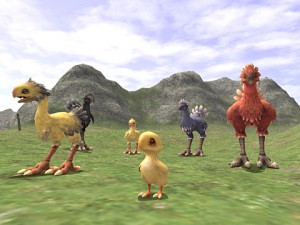
Horses just don’t exist in Final Fantasy worlds. Instead these big, usually yellow flightless birds serve as mounts for traveling short distances or for use as pack animals. They made their first appearance in FF2, and are so cute they are the de facto mascot of the series.
Moogles
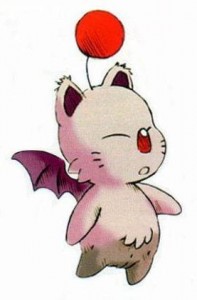
If Chocobos weren’t cute enough the games had these cuddly, cat-bat creatures with antennae on their heads. They served several functions throughout the series: weapon smiths, mail carriers, save points, and even playable characters. They also made their first appearance in FFII. None can resist their adorable catchphrase: Kupo!
Airships
Not surprisingly, the worlds in Final Fantasy lack C-47 Transports and AC-130 Gunships. Airships provide long distance transportation and often times serve as a base of operations for the party. The airships from the older games resembled Victorian-style propeller driven zeppelins. In more recent games they looked like futuristic space vessels.
Crystals
The One Ring, The Holy Grail, The Crystal Skull…what to these items have in common? They are MacGuffins- items that drive the plot in fantasy quests. Crystals serve as All Important Relics in a lot of fantasy adventures, and they are prominent in the Final Fantasy series. They are at the center of each conflict, related to powerful magic or the very life force of the planet in certain titles.
Black Mages and White Mages
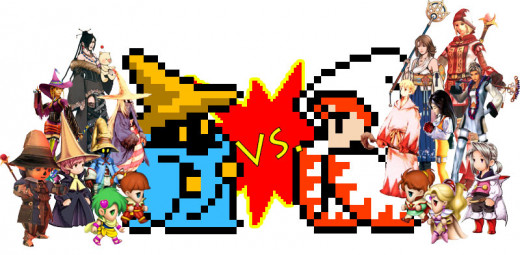
Black Mages are arcane offensive powerhouses that handle your fire, lightning, and any other spell that either weakens or reins destruction on the enemy. The classic Final Fantasy Black Mages are represented simply by their blue robes, tall brimmed hats and glowing eyes.
White Mages handle the healing and defensive spells of the party. In the older games they are distinguished by their hooded white robes with red trim. They are the lifeblood of your adventuring crew. The old adage is true: offense gets the glory, but defense defeats the final boss.
Together they form the foundation of your magical arsenal.
Cid
For some reason, there is always a character named Cid in the game. Sometimes he’s a major character or even a playable character, sometimes he’s in a minor role that just makes a cameo. But he’s always some sort of engineer. Cid was even in the terrible Spirits Within movie.
Summoned Creatures
Whether they’re called Espers or Eidolons, summoned creatures help the party with powerful and devastating attacks on their enemies or grant strong protections that buff or heal the adventurers. Several of them are based on Arabic, Hindu, Greek, Norse, and even Aztec mythology. Quite a few of them have made multiple appearances like Ifrit (fire), Shiva (ice), Leviathan (tidal wave), Odin (sword attack or death) and Bahamut (platinum dragon with breath weapon). Starting with FF7, summons were the most graphically spectacular attack, with long and sometimes unskippable animations.
Cactuar
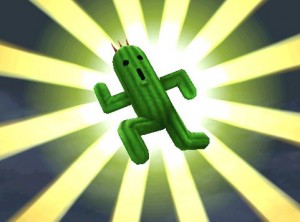
Cactuars are quirky, randomly encountered enemies that appear in a lot of the games. They are characterized by being extremely difficult to hit and are prone to escaping, but defeating them results in a whole lot of experience points.They are sometimes summons, too.
Master Tonberry
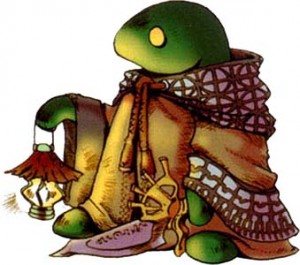
You and your companions are the biggest badasses in the world. You’ve brought down otherworldly monsters and three headed dragons. Your knight wields Excalibur, your samurai possesses the Masamune katana, and your mage inflicts 9999 points of damage with the Ultima spell. In your travels you encounter one wizened anthropomorphic lizard carrying a lantern. He approaches the party slowly and with hostile intent. Your attacks don’t seem to slow him down. Before you know it he whips out a dagger and KILLS one of your allies! He is a random encounter to be feared.
Biggs and Wedge
Apparently the guys behind Final Fantasy are Star Wars fans as well. Characters named after Luke Skywalker’s pals Biggs Darklighter and Wedge Antilles make several appearances in the FF games. They are usually in minor roles as allies, grunts in the opposing military force, or general comic relief.
These Tunes By Composer Nobuo Uematsu
The Games
The fourteen main Final Fantasy titles are stand alone stories with distinct characters, worlds, story lines, and even gameplay mechanics. During the early years they were set in traditional medieval worlds, but starting with part six they started branching into more modern-ish eras.
Final Fantasy (Nintendo Entertainment System,1987)
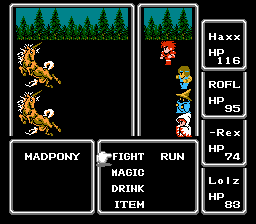
The plot of the very first Final Fantasy is pretty generic, with the four Light Warriors embarking on numerous fetch quests to defeat four fiends based on the classical elements: Earth, Fire, Water, and Wind. They can then open a portal to a place where they can defeat the ancient evil of Chaos. It had all the bare basics of the standard console RPG: character classes, visiting towns, random encounters, experience points and leveling up, and so on. FF1 also had typical high fantasy staples like elves and dwarves who have all but disappeared from later games.
Final Fantasy II (Famicom 1988)
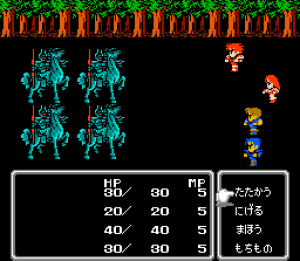
Originally released only in Japan, Final Fantasy II introduced several elements that would become staples throughout the series. The Chocobo and recurring character Cid make their first appearance in FF2. This time, the heroes have actual names and identities. It is a more character-driven story as the heroes fight on the side of a rebellion against the Palamecian Empire and its tyrannical Emperor. FF2 also does away with traditional experience points for leveling up. Instead characters improved abilities by what weapon, spell, or ability they used most often. If you’ve played a lot of Skyrim, then this is a familiar mechanic.
Final Fantasy III (Famicom 1990)
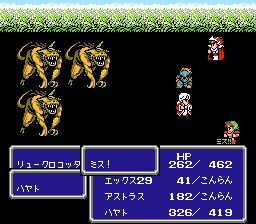
Another Japan only release until the 2006 remake, FF3 introduced further gameplay elements that would recur throughout the series. The “Job System” which is an interchangeable class system allowed for a more customizable experience. All four characters start off as the weirdly named “Onion Knights” but have access to any job available. The experience points system returns and new commands like “Steal” for the Thief and “Jump” for the Dragoon are featured for the first time. FF3 is also the first time summoned creatures become available. In the story, once again four orphaned youths are drawn to a crystal of light who tells them to go forth and bring balance back to the world, as well as defeat a warlock named Xande.
Final Fantasy IV (Super Nintendo, 1991)
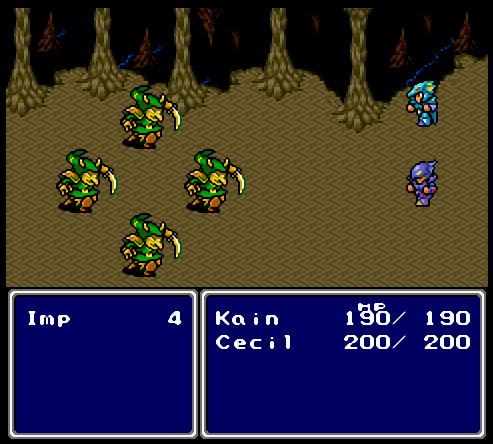
FFIV was released as Final Fantasy II in the U.S. and it is the first 16 bit title for the series. It featured a complex and involving plot with a huge cast of characters who die, appear to die, and reappear throughout the game. The story centers around Cecil, a disillusioned Dark Knight who embarks on a quest for redemption and to stop the Darth Vader-like Golbez from destroying the world. It’s definitely one of the better stories throughout the series. The player could control up to five party members, when previous titles were restricted to four. The most notable gameplay innovation is the now famous Active Time Battle system. Whereas in previous titles you could take as much time as you wanted to choose a command, the ATB injected a sense of urgency by letting enemies attack the party while you sifted through menus. It was good incentive to be decisive and have your wits about you. This game could be beaten in one night if you play for 12 hours straight, and it still feels shorter than the Hobbit movies.
Final Fantasy V (Super Famicom, 1992)
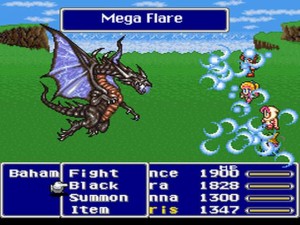
FF5 was yet another Japan only title until it was released along with Final Fantasy VI as Final Fantasy Anthology for the PlayStation in 1999. The most prominent feature of FF5 was its extremely deep and customizable Job system which allowed the four main characters to be skilled in several classes. The Job system enabled one character to be a both a monk and a berserker and another character to be a blue mage and bard should the player desire. It made it so that every FF5 player would have a unique experience. This title also used the Active Time Battle System meter to be able to anticipate which character’s turn was coming up next. The story started off with four characters that once again embark on a quest to save four crystals that govern the four elements. And then they had to stop an evil being named X-Death from bringing the world to oblivion. The villain is fairly forgettable and the heroes were pretty bland themselves. The real star was all the customization.
Final Fantasy VI (Super Nintendo, 1994)
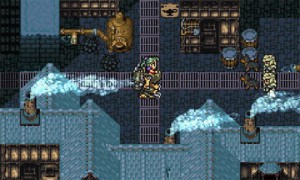
Originally released as Final Fantasy III, FF6 is the last and in my opinion best of the pre- CD ROM era. The Active Time Battle system remains unchanged from FFV. This time the gameplay is based on use of Espers, magical beings that imbue spells on characters they are assigned to. They also serve as summoned creatures. Each character possesses special abilities based on their class but they all eventually learn spells. Instead of the medieval setting like the previous titles, FF6 is in more of a steampunk setting. Yeah, I think this is steampunk. It is kind of like a bridge between the traditional fantasy settings of the prequels and the futuristic sci fi settings of the later games. The story centers on a mysterious young woman named Terra with a gift for magic. She eventually meets up with a cast of distinct and memorable characters who join forces to defeat the iron fisted Emperor Gestahl and his insane, Joker-like advisor Kefka. FF6 contains some genuinely emotional sequences for a 16-bit title, and who can forget the beautifully done Opera Scene?
Final Fantasy VII (PlayStation, 1997)
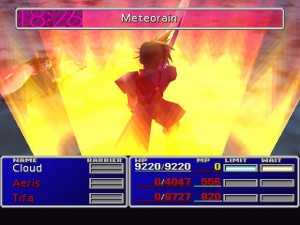
The first Final Fantasy for the 32 bit era was a huge deal. I remember the TV commercials vividly, showcasing only the prerendered cut scenes but none of the actual gameplay screens. Regardless, FF7 was extremely successful and was responsible for bringing RPGs into the mainstream. Skills, abilities, and magic were based around Materia, orbs that could be attached to weapons and equipment. Characters had powerful special attacks called Limit Breaks which were spectacularly fun to watch. Even more spectacular were the summon spells which took advantage of the more powerful hardware. They were incredibly cinematic, especially the multi-hit Knights of the Round. For the first time, the series took a much darker tone and was fully set in a sci-fi world with modern technology, mechs, and plasma rifles. Starring a mentally unhinged Cloud Strife and the pretty, emerald-eyed dreamboat Sephiroth as the villain, FF7 had one of the best stories of the series. Aeris DIES in this. Spoiler alert.
Final Fantasy VIII (PlayStation,1999)
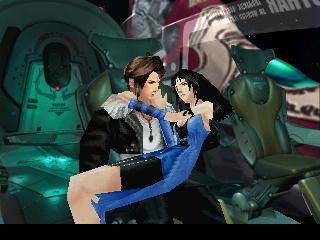
Final Fantasy VIII also has its foot set firmly in a near future sci-fi setting. Starring a determined loner named Squall Leonhart, he is part of a group of young mercenaries who are drawn into an international war and seek to prevent the sorceress Edea from manipulating it for her own purposes. It also revolves around the romance between Squall and the outspoken Rinoa Heartilly. Visually characters have a more realistic look as opposed to the cartoonish characters from previous installments. FF8 does away with several series staples by using the Junction system. By “junctioning” Guardian Forces (basically summoned creatures) to characters, they then have access to commands beyond basic attacks with their main weapon. It marks the first time summoned creatures performed a function other than a single devastating attack. And instead of magic consuming the usual magic points, spells are “drawn” from enemies at Draw Points and stored as quantified inventory. It was different for sure, but it kept the series fresh. FF8 was also the first FF title to feature a theme song with vocals. It’s on four CDs, after all.
Final Fantasy IX (PlayStation, 2000)
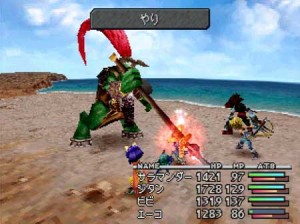
Final Fantasy IX was the last FF for the PS1, and was developed as an homage to the older games. Steeped in nostalgia, FF9 went back to the traditional fantasy setting, complete with comically exaggerated physical features on characters, the return of the Active Time Battle system, strict character classes, and blue robed Black Mages. It is a lighter hearted story starring a young thief named Zidane Tribal and his group of motley companions. They eventually confront a manipulative weapons dealer called Kuja and his silver dragon named “Silver Dragon.” FF9 also goes back to the four member party, magic points for spell casting, and a simple Item system for learning skills and abilities. Players familiar with the first six Final Fantasies are instantly at home with FF9. The only difference is the use of polygons rather than sprites. Look for the word for word Yoda quote before the very last battle.
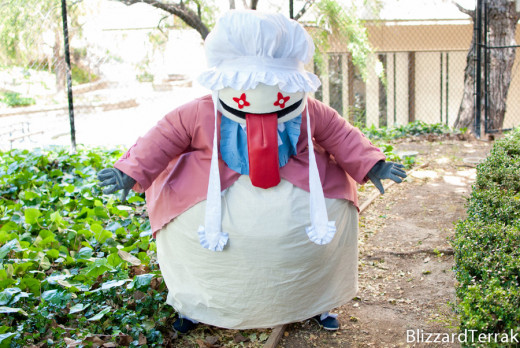
Final Fantasy X (PlayStation 2, 2001)
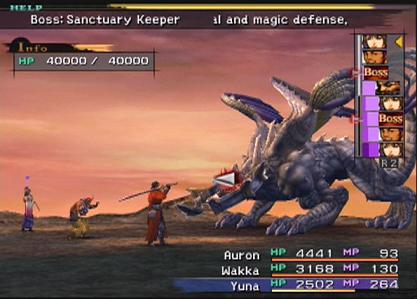
The PlayStation 2 did wonders for the next Final Fantasy, because part 10 had a radical new feature: actual voice acting. Other innovations were the lack of an overworld, the awesome ability to switch characters on the fly in battle, and best of all no annoying random encounters when trying to solve a puzzle! You know how irritating that is in RPGs? Character advancement was handled through a Sphere Grid, which allowed for greater freedom in customizing the characters though they all have obvious intended battle roles. Blitzball, a fictional water polo-like sport has a prominent role as a mini game and is necessary to gain certain abilities. You either loved it or didn’t bother with it. FF 10 had one of the more complex storylines that are at times hard to follow. It revolved around a whiny, bleach blond Blitzball player named Tidus and his father issues. It seemed like the early 2000s were the era of the whiny annoying protagonist like Raiden of Metal Gear Solid 2 and Anakin Skywalker, but I digress. The story also focuses on a summoner and Tidus’ love interest Yuna, who is the key to the relentless cycle of death and rebirth in the game’s world involving an entity called “Sin.” It’s complicated.
Final Fantasy XI (PlayStation 2, 2002)
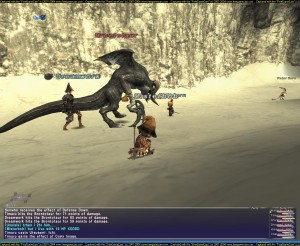
Final Fantasy entered the huge subscription based world of the Massively Multiplayer Online Role Playing Game (MMORPG) with FF 11. Like others of this genre, the player customizes a character and goes on missions and side quests, best teamed up with a group of other players. The player can choose from five different races and up to twenty different jobs. Set in the fantasy world of Vana’diel the main quest is to band the nations together to thwart the resurrected Shadow Lord. Of course, there are thousands of other things to do to sap the player’s time such as Chocobo breeding.
Final Fantasy XII (PlayStation 2, 2006)
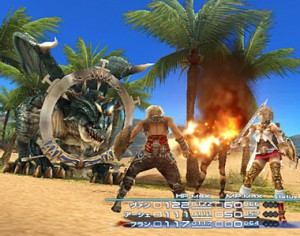
The twelfth installment of Final Fantasy introduced several more innovations. In a way, it takes a more western RPG approach by eliminating the separate battle screen and random encounters altogether. Players can see potential hostiles in the consistent overworld and can choose to either engage or avoid them. The actual battles are still menu based. The Gambit system allowed for assigning tactical conditions to the other members of the party. Advancement was handled via a License Board, similar to FF10’s Sphere Grid. Summoned creatures (Espers) fought alongside the party instead of completely taking over like in previous games. Another FF6 term, “magicite” is revived as well. Starring a shirtless orphan named Vaan, he ends up helping a princess named Ashe in a resistance against the tyranny of the Archadian Empire, because stories about princesses and evil Empires are completely untrodden territory.
Final Fantasy XIII (PlayStation 3, Xbox 360, 2010)
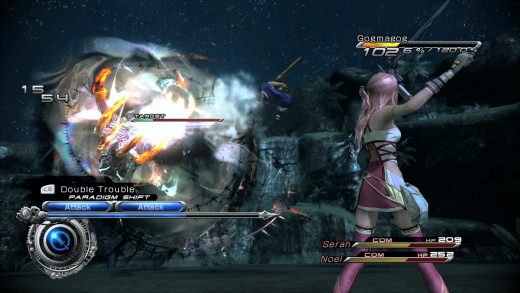
The first Final Fantasy for the seventh generation of consoles, the thirteenth main installment took the series in new directions. It had stellar production values and English voice acting that actually synced with the characters’ mouths. It has been criticized by some longtime fans due to how restrictively linear it is until near the end as well as how the player can only take control of one character at a time in the three member party; the AI handles the companions. But as the game progresses the system reveals a remarkably satisfying complexity. FF13 stars Lightning, the first female protagonist since Terra in FF6. She and her companions must face off against an oppressive government again while they embark on a quest to keep themselves from turning into monsters or crystals due the actions of strange god-like beings.
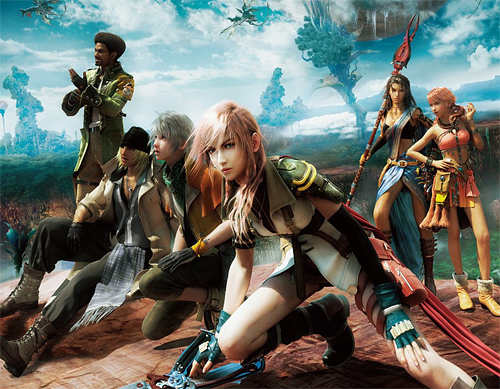
Final Fantasy XIV (PC, 2010, PC and PlayStation 3, 2013)
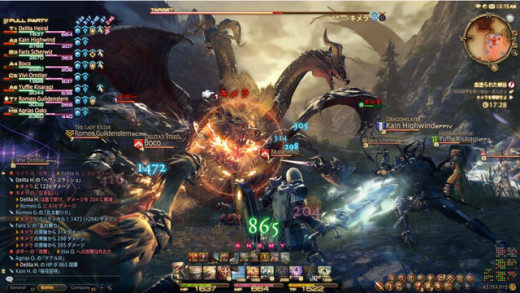
Like its predecessor Final Fantasy XI, the PC-only FF XIV was Square Enix’s foray into the time consuming world of the MMORPG. Gameplay consisted of customizing your character from a variety of races and jobs and then dropping them into the game world to kill stuff, loot, customize weapons, and interact with other players…via text. The game has been widely criticized for its cluttered interface of menus and sub-menus as well as limited quests and sheer monotony. The story is about some Empire invading the land while various city states must band together in an Alliance to fight them off. A reboot subtitled A Realm Reborn was released on the PlayStation 3 and PC to address the previous issues. The "destruction" of the old version was even represented in-game with an apocalyptic meteor crashing into the world.
Final Fantasy XV (TBA)
Here’s a trailer Final Fantasy XV, still in development. I’m probably going to have a hard time getting past the protagonist’s J-Pop band reject haircut. Hey, one guy looks like Cloud!

